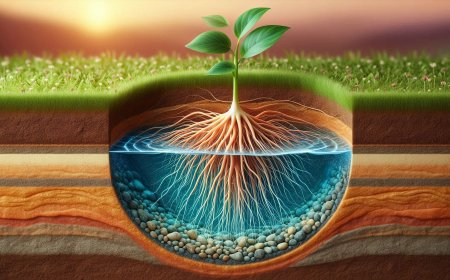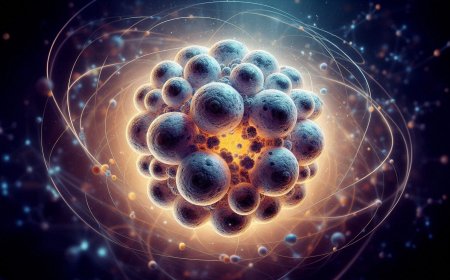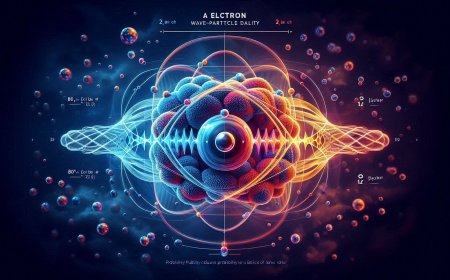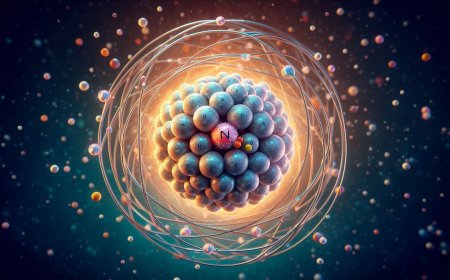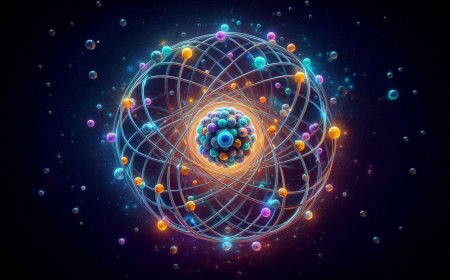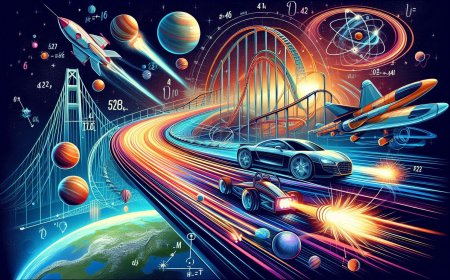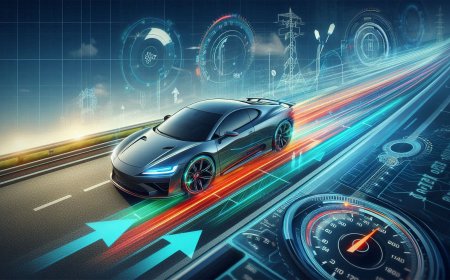Acceleration: The Force Behind Movement in Physics
Explore the physics concept of acceleration, understanding its types, examples, and applications in daily life and technology. Learn about constant, variable, and centripetal acceleration and their roles in shaping the universe and technological advancements.
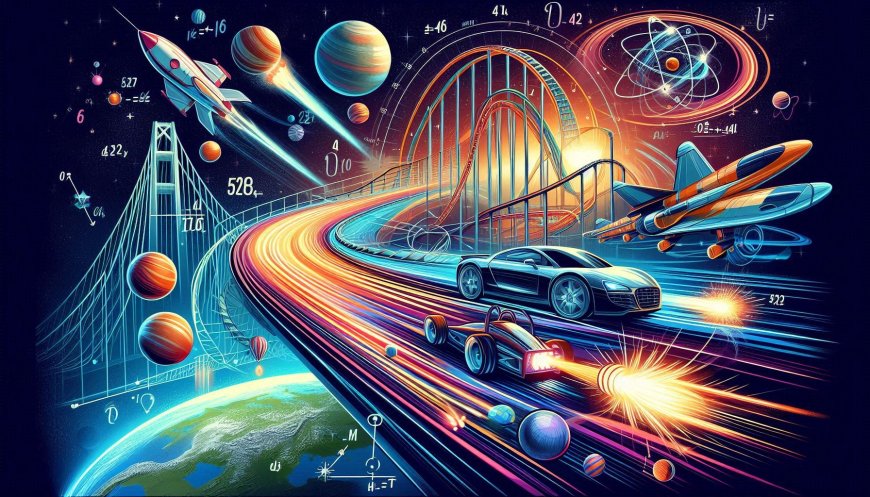
In the world of physics, one of the most fascinating concepts is acceleration. Often described as the rate at which an object changes its velocity, acceleration plays a critical role in understanding movement and forces in everyday life. From cars speeding up on a highway to the way planets orbit the Sun, acceleration is the invisible force that shapes our universe.
Understanding Acceleration
To put it simply, acceleration occurs any time an object changes its speed or direction. This could mean an object moving faster, slowing down, or changing course. Unlike speed, which measures how fast something is moving, acceleration measures how quickly its speed or direction changes. When you press the gas pedal in a car, the car speeds up—this is acceleration. When you brake, the car slows down, and that’s also a form of acceleration (specifically, deceleration).
Acceleration can be defined with the equation:

where a represents acceleration, Δv is the change in velocity, and Δt is the time taken for this change. In physics, this relationship is critical in predicting and analyzing motion.
Types of Acceleration
- Constant Acceleration: This is when an object experiences a steady change in velocity over time. A classic example is free-fall, where an object accelerates downward due to gravity at a constant rate of approximately 9.8 m/s² on Earth.
- Variable Acceleration: Unlike constant acceleration, variable acceleration means that the rate of acceleration changes over time. This type of acceleration is often seen in real-world situations, like when a car accelerates faster when moving downhill and slower going uphill.
- Centripetal Acceleration: This type of acceleration occurs when an object moves in a circular path. Although the speed of the object might remain constant, the constant change in direction results in acceleration toward the center of the circle.
Why Acceleration Matters
Understanding acceleration is essential for grasping many physical concepts, from basic mechanics to complex astrophysics. Engineers rely on knowledge of acceleration to design safe vehicles, create stable buildings that can withstand earthquakes, and ensure rollercoasters can thrill riders without endangering them. Even in sports, understanding how to control acceleration and deceleration is key to improving performance and preventing injury.
In the field of astrophysics, acceleration explains much of what we observe in the universe. For instance, the acceleration due to gravity keeps planets in orbit around stars, and the idea of cosmic acceleration—an accelerating expansion of the universe—is a fundamental question in cosmology today.
Experiencing Acceleration in Everyday Life
We encounter examples of acceleration everywhere, often without realizing it. When riding in a car, the sensation you feel as it starts, stops, or turns is due to acceleration. The thrill of a rollercoaster ride comes from rapid accelerations and decelerations. Even when you toss a ball in the air, it accelerates due to gravity, changing direction and speed as it moves up and down.
Acceleration also plays a role in more surprising areas, like the vibrations of a smartphone, the launch of a rocket, and the swinging motion of a pendulum. Each example reflects how acceleration governs not only grand scales, like planetary orbits, but also the small, everyday events we might take for granted.
Acceleration in the Digital Age: A Path to Innovation
In today’s digital world, acceleration is more than a concept; it’s a driver of innovation. Accelerometers, which measure acceleration, are embedded in smartphones, cars, fitness trackers, and even drones. These tiny devices can detect movement, orientation, and tilt, enabling a wide range of applications. Your smartphone, for instance, uses an accelerometer to switch between landscape and portrait modes. Fitness trackers use it to monitor steps and physical activity, and accelerometers in cars can trigger airbags in the event of a sudden deceleration during a collision.
The Future of Acceleration in Physics
In the realm of theoretical physics, scientists are constantly exploring new ideas about acceleration. From developing better transportation methods to understanding the acceleration of cosmic bodies, the study of acceleration continues to be a cornerstone in the quest to understand the universe. Concepts like warp speed in space travel or anti-gravity technology are, at their core, studies of acceleration and movement.
As we deepen our understanding, the role of acceleration in physics will continue to shape the technology and possibilities of the future.
Conclusion
Acceleration is more than just a measure of speed change; it's a powerful concept that helps explain how and why things move in the way they do. From influencing technology to guiding planetary motion, acceleration is woven into the fabric of physics and daily life. Embracing this concept not only enhances our knowledge of the physical world but also empowers us to harness it in ways that continue to advance our society. Whether through understanding the forces at play in the cosmos or developing groundbreaking technologies on Earth, acceleration truly is the driving force in physics.
What's Your Reaction?









